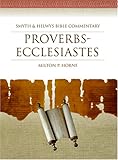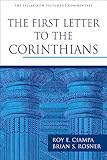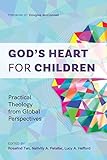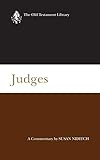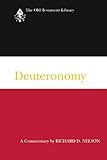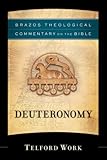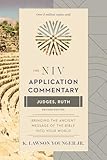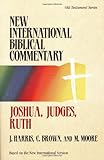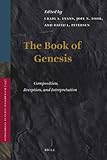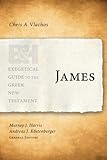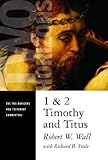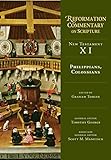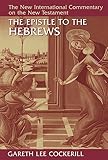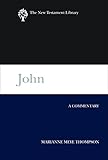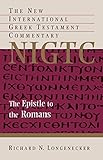The Nature Of Christ’s Habitation In Ephesians 3:17A: A Philological, Conceptual, Historical, Exegetical And Theological Analysis (Record no. 16713)
[ view plain ]
| 000 -LEADER | |
|---|---|
| fixed length control field | 02995nam a22001697a 4500 |
| 005 - DATE AND TIME OF LATEST TRANSACTION | |
| control field | 20220301063826.0 |
| 007 - PHYSICAL DESCRIPTION FIXED FIELD--GENERAL INFORMATION | |
| fixed length control field | ta |
| 008 - FIXED-LENGTH DATA ELEMENTS--GENERAL INFORMATION | |
| fixed length control field | 211008s2019 sa ||||fom| | 00| e eng d |
| 040 ## - CATALOGING SOURCE | |
| Transcribing agency | ZA-BrSAT |
| 100 ## - MAIN ENTRY--PERSONAL NAME | |
| Personal name | Connoway, Izaak |
| 9 (RLIN) | 682 |
| 245 ## - TITLE STATEMENT | |
| Title | The Nature Of Christ’s Habitation In Ephesians 3:17A: A Philological, Conceptual, Historical, Exegetical And Theological Analysis |
| 260 ## - PUBLICATION, DISTRIBUTION, ETC. | |
| Place of publication, distribution, etc. | Johannesburg South Africa |
| Name of publisher, distributor, etc. | South African Theological Seminary |
| Date of publication, distribution, etc. | 2019 |
| 300 ## - PHYSICAL DESCRIPTION | |
| Extent | 134 pages |
| Other physical details | |
| Dimensions | A4 |
| Accompanying material | Abstract, TOC |
| 502 ## - DISSERTATION NOTE | |
| Degree type | Master of Theology (Mth) |
| Name of granting institution | South African Theological Seminary |
| Year degree granted | 2019 |
| Supervisors | |
| 520 ## - SUMMARY, ETC. | |
| Summary, etc. | Ephesians 3:16-19 is filled with syntactical oddities. My survey of the scholarly literature indicated that 3:17 has received less attention than the other verses. It is also enigmatic on the issue of the portrayal of Christ’s habitation in their hearts. The grammar seems to indicate a request for Christ to take up habitation (inception), while its context suggests they are already indwelt by Christ (2:22). A majority of the consulted commentators understand the inception of Christ’s habitation and the inception of salvation as being equal. Naturally and sensibly an inceptive interpretation creates a problem for them, and so they interpret the prayer as a request for Christ’s work in the Ephesians. However, the verb κατοικῆσαι is an aorist tense verb, which leads a minority of the consulted commentators to interpret the habitation as inceptive. The majority view favours the context in forming an interpretation, while the minority view favours the grammar. This study seeks to contribute to the literature available on Ephesians 3:17 by inquiring into the nature of Christ’s habitation in this verse. The hypothesis is that the minority view is correct. The first step is a philological analysis of κατοικέω and some cognates in the Old Testament and the New Testament. The second step is a conceptual and historical analysis of divine habitation in Second Temple Jewish Literature and the New Testament. The third step is a theological and exegetical analysis of Ephesians 3:17 and its context. Verbal aspect plays a major role in the exegetical section. Verbal aspect indicates that Ephesians 3:17 is a prayer for Christ to take up habitation, which indicates that the minority view is correct. However, the communicative purpose behind the verbal aspect is in line with a durative reading, lending some credence to the majority view. Paul’s communicative purpose (aim) in asking for Christ to take up habitation in the Ephesian believers was found to be spiritual insight and maturity. The significance of the study is that it contributes to the literature available that specifically focus on Ephesians 3:17 and it also solves the enigmatic contradiction between the grammar and context of κατοικῆσαι in Ephesians 3:17. |
| 942 ## - ADDED ENTRY ELEMENTS (KOHA) | |
| Source of classification or shelving scheme | Dewey Decimal Classification |
| Koha item type | Thesis |
| Withdrawn status | Lost status | Source of classification or shelving scheme | Damaged status | Not for loan | Collection code | Home library | Current library | Shelving location | Date acquired | Barcode | Date last seen | Copy number | Uniform Resource Identifier | Price effective from | Koha item type |
|---|---|---|---|---|---|---|---|---|---|---|---|---|---|---|---|
| Dewey Decimal Classification | Electronic Holdings | South African Theological Seminary | South African Theological Seminary | Online Resource | 10/08/2021 | 0000000011297 | 10/08/2021 | 1 | https://sats-dspace.s3.af-south-1.amazonaws.com/Theses/Thesis_MThMini_2019_ConnowayIJL.pdf | 10/08/2021 | Thesis |

